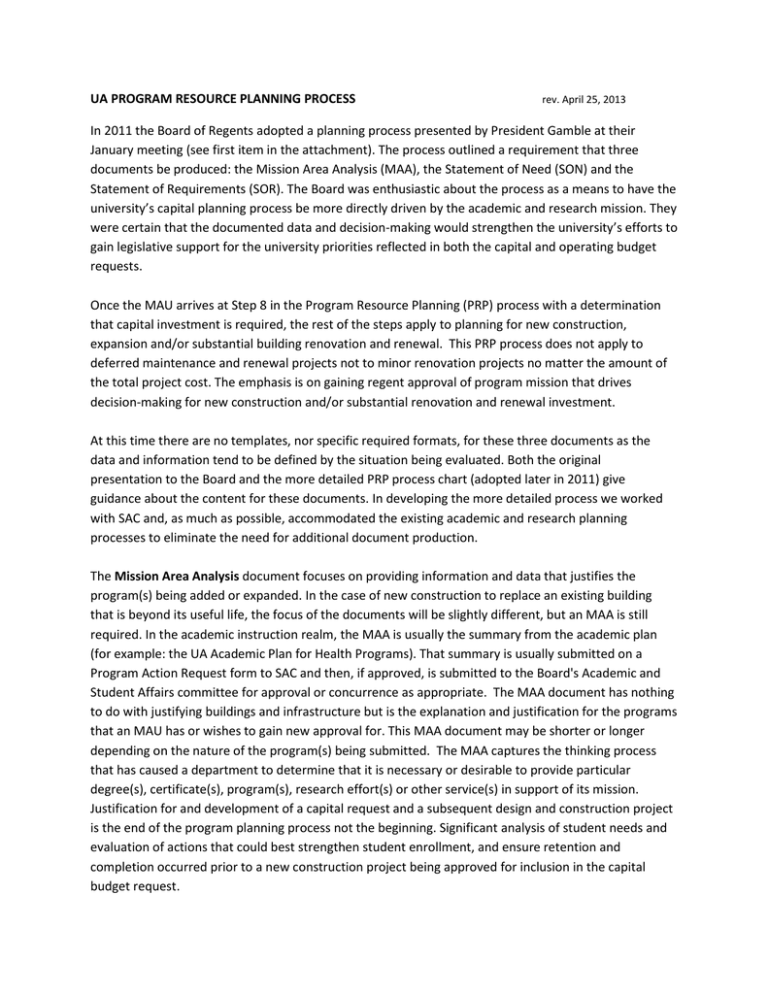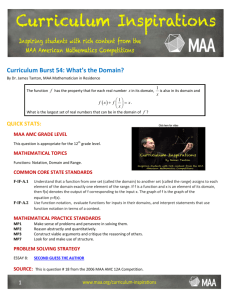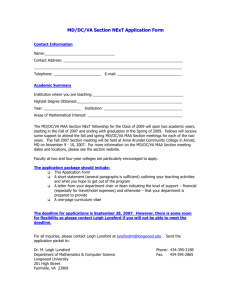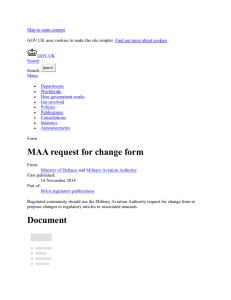Program Resource Planning- further explanation
advertisement

UA PROGRAM RESOURCE PLANNING PROCESS rev. April 25, 2013 In 2011 the Board of Regents adopted a planning process presented by President Gamble at their January meeting (see first item in the attachment). The process outlined a requirement that three documents be produced: the Mission Area Analysis (MAA), the Statement of Need (SON) and the Statement of Requirements (SOR). The Board was enthusiastic about the process as a means to have the university’s capital planning process be more directly driven by the academic and research mission. They were certain that the documented data and decision-making would strengthen the university’s efforts to gain legislative support for the university priorities reflected in both the capital and operating budget requests. Once the MAU arrives at Step 8 in the Program Resource Planning (PRP) process with a determination that capital investment is required, the rest of the steps apply to planning for new construction, expansion and/or substantial building renovation and renewal. This PRP process does not apply to deferred maintenance and renewal projects not to minor renovation projects no matter the amount of the total project cost. The emphasis is on gaining regent approval of program mission that drives decision-making for new construction and/or substantial renovation and renewal investment. At this time there are no templates, nor specific required formats, for these three documents as the data and information tend to be defined by the situation being evaluated. Both the original presentation to the Board and the more detailed PRP process chart (adopted later in 2011) give guidance about the content for these documents. In developing the more detailed process we worked with SAC and, as much as possible, accommodated the existing academic and research planning processes to eliminate the need for additional document production. The Mission Area Analysis document focuses on providing information and data that justifies the program(s) being added or expanded. In the case of new construction to replace an existing building that is beyond its useful life, the focus of the documents will be slightly different, but an MAA is still required. In the academic instruction realm, the MAA is usually the summary from the academic plan (for example: the UA Academic Plan for Health Programs). That summary is usually submitted on a Program Action Request form to SAC and then, if approved, is submitted to the Board's Academic and Student Affairs committee for approval or concurrence as appropriate. The MAA document has nothing to do with justifying buildings and infrastructure but is the explanation and justification for the programs that an MAU has or wishes to gain new approval for. This MAA document may be shorter or longer depending on the nature of the program(s) being submitted. The MAA captures the thinking process that has caused a department to determine that it is necessary or desirable to provide particular degree(s), certificate(s), program(s), research effort(s) or other service(s) in support of its mission. Justification for and development of a capital request and a subsequent design and construction project is the end of the program planning process not the beginning. Significant analysis of student needs and evaluation of actions that could best strengthen student enrollment, and ensure retention and completion occurred prior to a new construction project being approved for inclusion in the capital budget request. The Statement of Need document is a concise summary of the compelling facts derived from the MAA data and justification. This can be a single page or two. It does not need to be long. The SON is submitted along with the MAA to the Board's Academic and Student Affairs Committee for review and approval. The purpose is to provide the Board a concise summary of program analysis and the capital and operating budget impacts (both increases and decreases). In the case of research, there is usually material already developed which documents the strengths of our current program of research and perhaps outlines additional directions which are leading to a conclusion that something is needed, such as the focus on research and development to build and sustain Alaska's economic growth which was included in the FY14 operating budget request. If space alteration or construction is a need, the MAU will want to involve the Facilities department in preparing this document and the SOR. The Statement of Requirements documents the detailed solution set (options) that can satisfy the SON. It includes: identification of program personnel (faculty and staff) requirements; facility needs; furnishings, fixtures and equipment (FF&E) requirements; operations and maintenance (O&M) costs; and second order effects, such as space reallocation and repurposing planning (AKA backfill planning), personnel consolidation, opportunity gained or lost. This is the document that identifies all the potential impacts and potential costs associated with a mission expansion and is submitted to the Board for review and acceptance. In summary, the Program Resource Planning Process records the results of the thinking and planning processes which will, when appropriate or required, drive the administration’s and Board’s decisions about operating and capital investment strategy as well as project planning processes. The availability of this data and the record of decision-making provide strong answers to questions raised by the Board, the Governor and Legislators as we go through the budgeting process. As we have transitioned into full application of the PRP Process, we have experienced an increase in acceptance of our requests and improvement in our communication with the Finance Committees who are closely examining the outcomes achieved with the funds provided to the university.





